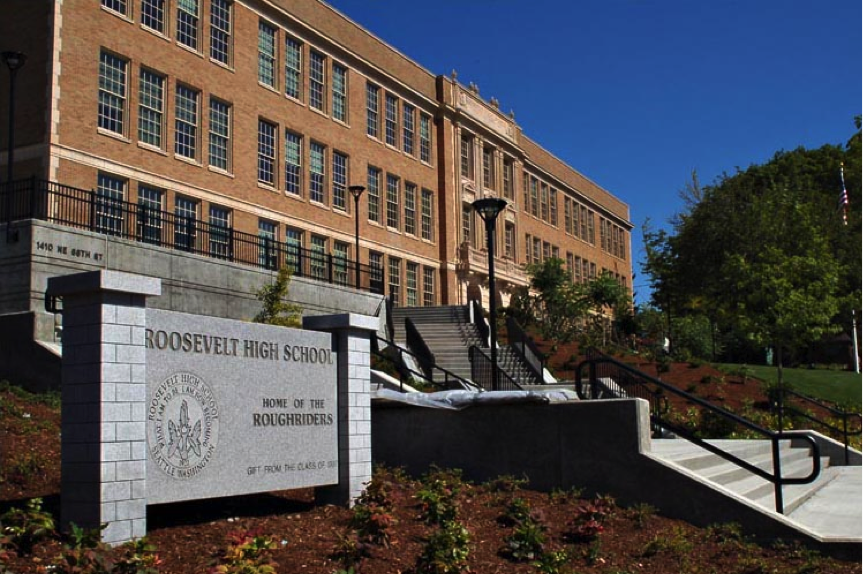Think of all the times you thought, “What if…?” What if you had called the girl (or guy) you exchanged numbers with but were too busy to follow up on? What if you had gone to that “other” school instead of the UW? What if you had called off the wedding you knew was a mistake instead of going through with it? What if you had taken the flight that crashed? So many “what ifs.”
That’s the premise underlying Steven Dietz’s play Bloomsday now playing at ACT Theater in Seattle. Bloomsday, as it is known in literary circles, occurs every June 16 to mark the day James Joyce first published Ulysses. Leopold Bloom, Joyce’s character, walks the streets of Dublin visiting friends, bars, and a brothel. The play Bloomsday is set in present day Dublin (or is it Dublin 35 years ago?). Time shifts between the two periods as the four actors on stage consider the “what ifs.” The two young actors are an Irish girl who takes visitors around the city celebrating Ulysses and recreating Leopold Bloom’s day and an American student who joins her tour group. The other two actors are their older selves ruminating on what might have happened if they had acted on their feelings 35 years earlier. The premise is clever and the dialogue crisp and funny. One of the advantages of being a writer is the ability to change outcomes and endings. One of my favorite novels, The French Lieutenant’s Woman has more that one ending. The reader can choose the one he likes best. Steven Dietz does something similar in Bloomsday. The young performers have a “what if” opportunity to choose a different ending.
I was thinking about Bloomsday the other day when I learned that jazz saxophonist, Phil Woods, had passed away. There was a “what if” moment in Wood’s life too. If he had chosen differently he would have deprived us of 70 years of great music. His “what if” moment came at age 12 when he inherited a sax from an uncle. He wasn’t much interested but his mother suggested he take at least one lesson “because your uncle went to a great deal of trouble to leave you the saxophone.” Clever woman. Later, Woods acknowledged that dying did indeed qualify as “a great deal of trouble.”
After that first lesson Mr. Woods continued with them in his hometown, then he moved on to Juilliard, and from there to play with all the jazz greats, Monk, Goodman, Parker and Dizzy Gillespie. Later in his career he added color to the songs of Billy Joel (Just The Way You Are) and Paul Simon (Have a Good Time). Woods was 83 when he died of emphysema complications. Despite the emphysema he continued to perform though he needed a wheel chair and an oxygen bottle. Imagine what it was like to blow extended riffs on a sax while suffering from emphysema. The man loved his craft.
Ulysses had its what if moment in 1922. It was banned as obscene in America, but Sylvia Beach, the expatriate Parisian bookseller, running her iconic Shakespeare & Company, borrowed the money to publish her friend’s novel.. Despite the American ban Ulysses became an international literary success, but it wasn’t until 1934 that an American judge ruled it “a sincere and honest book” and cleared the way for an American edition. It’s another “what if.” What if Sylvia Beach hadn’t borrowed the money and taken the risk? What if the 1934 case had gone to another judge? Life is full of what if moments.














































